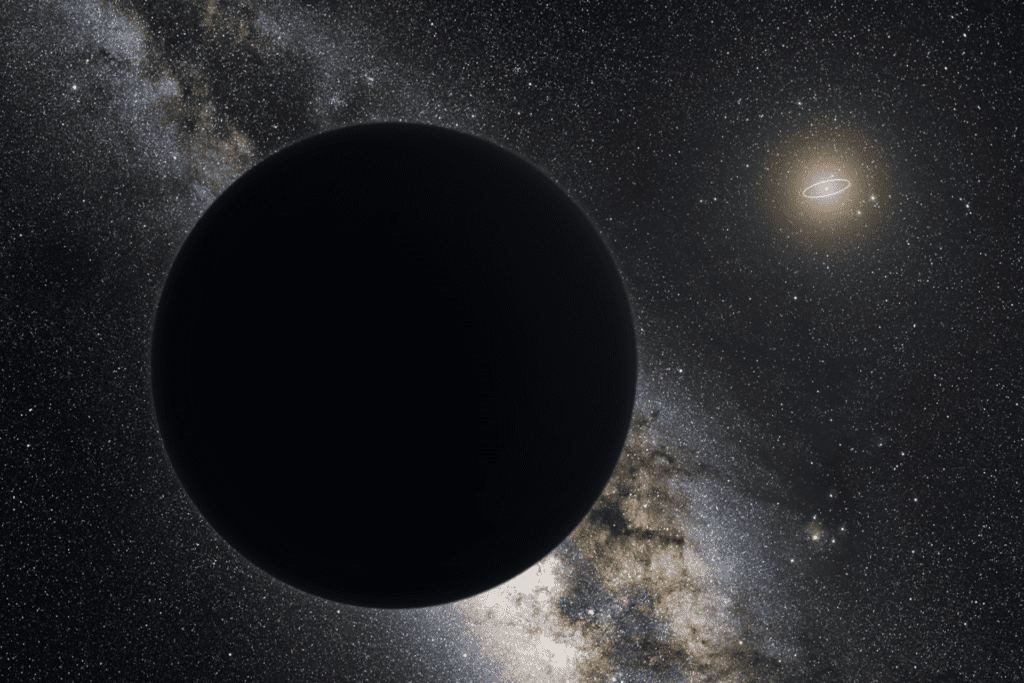The odd behavior of a newly discovered distant object suggests it’s being influenced by a large, yet unidentified planet in our solar system. This planet is tentatively called Planet Nine until scientists can confirm or rule out its existence.

The sky view and appearance are based on the conjectures of its co-proposer, Mike Brown. Credit: Tom Ruen, Wikimedia Commons.
It all started in early 2016, when Konstantin Batygin and Mike Brown, two planetary astrophysicists at the California Institute of Technology (Caltech) in Pasadena, predicted that an unidentified new planet is chilling somewhere in the outer fringes of the solar system. Their calculations suggest a number of objects from the Kuiper Belt — the circumstellar disc beyond the known planets — were aligning in a strange way, without any consistent explanation. After many iterations, no model could explain this erratic behavior other than the existence of a new planet roughly ten times more massive than Earth and about 20 times farther from the Sun than Neptune. Such planets, by virtue of their size, are called Super-Earths by scientists.
“This would be a real ninth planet,” Brown, who is one of the people responsible for de-classifying Pluto as a planet, said at the time of the controversial announcement. “There have only been two true planets discovered since ancient times, and this would be a third. It’s a pretty substantial chunk of our solar system that’s still out there to be found, which is pretty exciting.”
Since these initial findings were announced, various other evidence has surfaced supporting the existence of Planet Nine. For instance, one 2017 study found that there are at least six objects in the Kuiper Belt whose elliptical orbits point in the same direction, about 30 degrees downward compared to the pancake-like plane within which the solar system’s planet orbit the sun. Another study suggests that Planet Nine perhaps influenced the tilt of planets in our solar system.

Now, a large international team of researchers is pointing towards new evidence supporting the Planet Nine hypothesis. The new study suggests that a certain Trans-Neptunian object (TNO) called 2015 BP519, or Caju for short, is behaving erratically due to the gravitational influence of the mysterious planet. The shape of the TNO’s orbit is nearly perpendicular to the plane in which all the known planets orbit. Previously, Brown and Batygin ran a simulation that predicted the orbital angle of such an object — and now we just happened to find a match.
“We also consider the long term orbital stability and evolutionary behavior within the context of the Planet Nine hypothesis, and find that 2015 BP519 adds to the circumstantial evidence for the existence of this proposed new member of the solar system,” wrote the authors of the new study, which is available now on preprint website Arxiv, before it will eventually appear in The Astronomical Journal.
Previous observations of Caju failed to explain its orbit. No model could explain the object’s behavior other than a simulation where a large planet with Planet Nine’s characteristics has been added.
As remarkable as it may seem to find a new planet in our solar system in the 21st century, there’s really a lot of evidence pointing towards the fact. All that remains is for someone to actually find this elusive planet, wherever it may be lurking.






